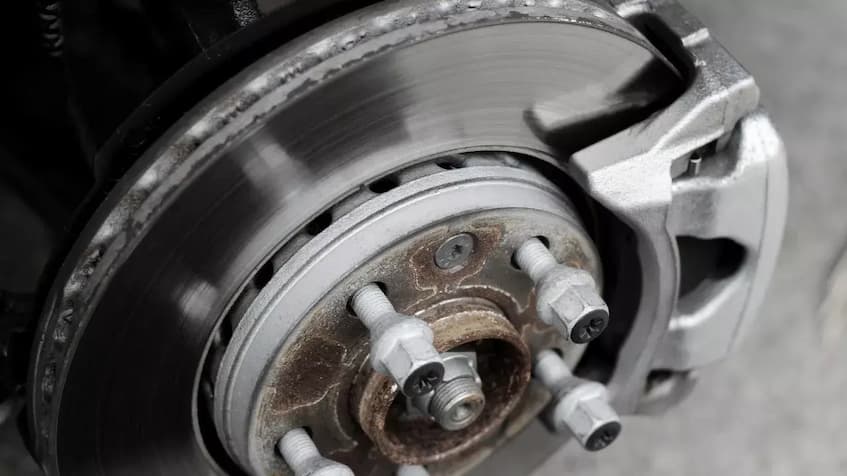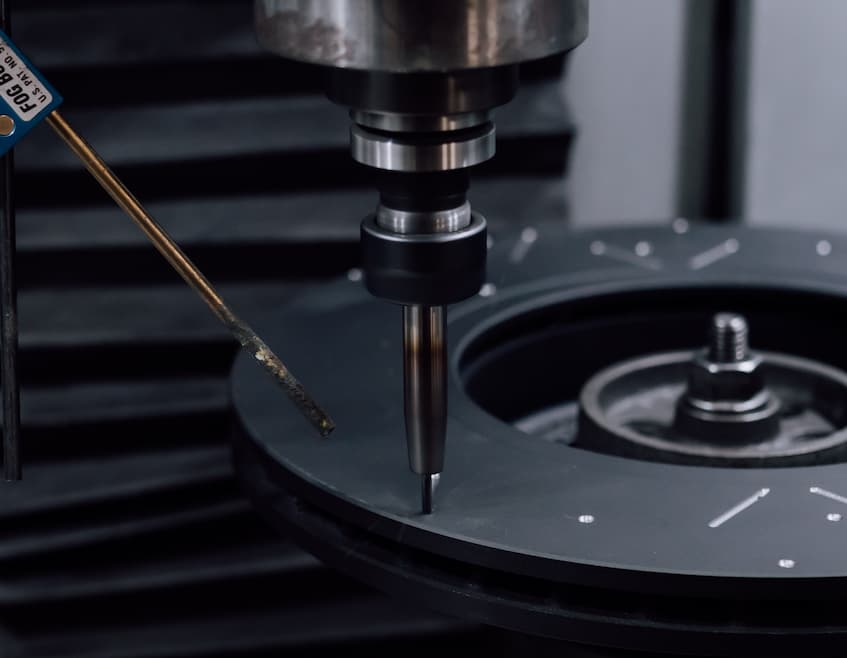Of the more than 3.5 million Toyotas that were manufactured in VC for over half a century, it’s no coincidence that more than 2 million of them were Camrys. From its initial rollout in 1979, Toyota has consistently marketed the Camry as the slightly more spacious, slightly more powerful alternative to their best selling Corolla. And with a history of performance and reliability that’s aligned perfectly with Toyota’s reputation for excellence, Camrys are in a class all their own.
Anyone who’s familiar with the Camry’s pedigree knows that they’re anything but stodgy family haulers, though. In V6/AWD trim, Camrys are capable of churning out 224kW with a top speed of 230km/h. That makes a solid maintenance schedule, together with regular brake service, a key aspect of keeping these mid-sized saloons safe. A car’s ability to go fast is a distant second to its ability to stop effectively, which is why high-quality pads and rotors need to be every Camry owner’s top priority.
Crucial Engineering That Sets Aftermarket Camry Brake Apart

When it comes to aftermarket brake parts and consumables, there’s no question about how important high-quality Toyota Camry brake pad and rotor sets are for safety. With a power-to-weight ratio that’s superior to virtually all other mid-sized saloons in their class, Camry’s need braking power they can rely on.
This is especially true, however, for code XV70 and XV80 Camrys equipped with ABS, and Pre-Collision braking with Pedestrian Detection (PCS w/PD) systems. These are some of the most effective forward collision and automatic emergency braking systems available anywhere, and the replacement pads and rotors used with them need to be capable of meeting or exceeding Toyota’s own rigid friction ratings.
Replacement brake manufacturers like RDA, Bendix, and Melbourne’s own VMAX know the stakes are high when it comes to aftermarket Toyota Camry brake pads and rotors. They understand how important it is for brakes to hold together under harsh braking applications while shedding significant levels of built-up heat. That’s why their consumables are built around reinforced basics that are crucial for all braking systems, including:
- Low friction composites. Carbon infused ceramic pads, together with lightweight, hardened steel rotors are the keys to keeping temperatures low and ultimately reducing the warpage and vibration that are known to lead to dangerous brake fade and failure.
- Consistent material thicknesses. Not only are consistently machined pad and rotor thicknesses essential for brake adhesion, they’re also crucial for maintaining adequate heat absorption, while reducing brake wear-out and the risk of cracking.
- Unsurpassed engineering. With centre-grooved pads and sensors engineered for responsive brake cooling from 0°C– 550°C, and deep slotted and thermally grooved rotors, aftermarket brakes are as effective at removing sponging brake dust and pad gases, as they are at disbursing heat.
The robust materials, precision engineering and racetrack-tough testing are what set premium aftermarket Toyota Camry brake pad and rotors apart from their low quality counterparts. It’s important to remember, though, that even with Camrys being capable performers, they’re still family cars. Camry owners expect their braking action to be as smooth and quiet, as they are confident. Fortunately, that’s precisely what high-quality replacement Camry brake pads and rotors are designed to deliver, regardless of the model.
Superior Brake Sets For Australia’s Most Exceptional Camry Models
With more than 40 different Toyota models available globally, it’s no surprise that the number of Camry options available over the years would be equally impressive. That also includes braking options, as Camry front rotor diameters can vary from 255mm on early 2000s 4-cylinder models, to 305mm on early 2020s TRD (Toyota Racing Development), and non-TRD models.
Front and rear pad and rotor combinations can even vary between individual trim packages as much as they do between model years and model codes. Camry owners need to be sure that when it’s time to refresh their brakes they’ve accurately verified the exact pad and rotor combination their car is equipped with.
Some Australian-market combinations are more common than others though, which is why the aftermarket pad and rotor sets offered for the following years and model codes are more prevalent than others:
- 2017 ASV70R Ascents;
- 2006-2009 ACV40s, 2010 AHV40s, and 2010 AHV40 hybrids;
- 2009 AVV50Rs, and 2011-2012 ASV50Rs;
- 2017-2020 AXVH71R Ascent hybrids; and,
- 2017-2024 AXVH70R GXs, SXs, and ZRs.
Ideally, while it’s certainly possible to verify pad and rotor sizes by consulting aftermarket databases, the most accurate way to verify them is by removing a rotor and measuring it. Regardless of how a driver verifies their pad and rotor dimensions though, they still need to be able to identify when they actually need replacing. Hard and firm maintenance schedules can’t predict when a Camry’s brakes need to be replaced. That’s why drivers need to be able to recognise the signs of excessive brake wear before they become dangerous.
Recognising When Pad and Rotor Replacement Are On the Horizon

Although Toyotas are known for their abundance of dashboard brake warning systems, a driver’s ability to identify the behind-the-wheel symptoms of brake wear are vital. The fact is, a worn or broken brake sensor, or even a completely unrelated battery or charging system problem can both cause incorrect dashboard brake system warnings.
That’s why, first and foremost, drivers need to be able to recognise the signs of brake wear by feel. The signs of pad and rotor wear are actually easy to recognise either through the braking and steering systems themselves, and they include:
- An unresponsive brake pedal. A brake pedal that fades, is spongy, or is slow to respond is a clear indication that a car’s pads or rotors are undergoing excessive wear and need to be replaced.
- Increased stopping distances. Pads and rotors that are unable to shed heat are prone to a loss of friction that can lead to severe slippage, glazing and potentially dangerous increases in stopping distances.
- Excessive frontend feedback. Whether through the brake pedal or through the steering wheel, frontend vibration, primarily as a result of rotor warpage, is an unequivocal sign of brake wear.
- Pulling and difficulty tracking. Cars can experience uncommon difficulty with pulling and difficult tracking straight if they’re battling against uneven brake wear, especially when traveling at high speed.
- Excessive brake pad rattle. Clicking, or excessive squeaking, squealing and grinding noises when pressing the brake pedal are signs that a pad may have become unseated, dislodged, or is on the verge of disintegrating.
Periodic visual inspections can also determine if a car’s brakes need replacing. Exceedingly thin pads are unmistakable when they need to be replaced – and deeply scarred, pitted, or discoloured rotors are all signs of heat-induced pressure that can lead to a catastrophic brake failure. Both cases warrant immediate pad and rotor replacement, and fortunately for Camry owners, they are also easy fixes.
The Final Word
At the end of the day, the Camry’s success as Toyota’s mid-sized mainstay is due as much to its performance as its practicality. And as one of the fastest, and most capable standard production saloons on the market, they need brake parts and consumables that are commensurate with their performance.
High-quality, aftermarket brake pad and rotor sets allow them to maintain and improve upon the stopping power that was intended by Toyota. That makes them the perfect braking solution for these fleet-footed family carriers.

